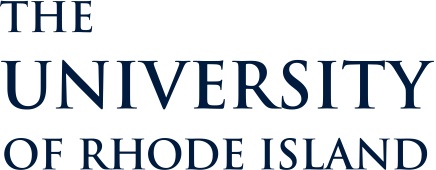Newswise — Farmers in Jamestown, R.I., are being paid by local residents to delay haying their fields until after birds have completed nesting in a unique test to establish investment markets for ecological services.
The project to protect habitat for bobolinks, a grassland-nesting bird whose population is declining in New England, was designed by a team of University of Rhode Island economists in collaboration with a URI biologist and Providence-based EcoAsset Markets, Inc.
"The public constantly says that they value a clean and healthy environment, and yet the economy overlooks those values and instead creates environmental problems," said Stephen Swallow, a URI professor of environmental economics. "Ecological markets are a way to correct these environmental problems by enabling businesses and individuals to express their values and invest in the environment. It's a way of bringing environmental qualities into our everyday decision making."
Farmers who grow hay for their livestock can usually get two cuttings a year from their fields, but the first one typically interferes with nesting grassland birds. The mowing machines can destroy the birds' nests, eggs and young. By compensating the farmers for the cost of delaying the harvest and purchasing replacement hay, the birds have enough time to mature and fly away without negatively impacting the farmers.
"This market approach is brand new," said Emi Uchida, assistant research professor in the URI Department of Environmental and Natural Resource Economics. "The Jamestown residents and farmers experienced one of the first experiments in the world to use a market approach to enhance ecosystem services."
The Jamestown project, which is funded by a $600,000 Conservation Innovation Grant from the Natural Resource Conservation Service and matching funds from URI and EcoAsset Markets, was launched last fall with a comprehensive survey of residents to learn about their attitudes and environmental values. The survey results helped the researchers determine the pricing strategies that would be most successful in raising the funds the farmers require.
Six hayfields with nesting bobolinks were available for local residents to invest in, each with different pricing options. For instance, one option asked potential investors to name the maximum amount they would be willing to invest, and they were charged that amount, regardless of what it was. Another option asked the same question, but all investors in that field were then charged a flat fee based on the average amount offered by all the investors. In every case, investors were promised their money back if not enough money was raised to implement the project on a given field. Investors also received partial refunds if more money was raised than was necessary.
Approximately 350 Jamestown residents participated in the market experiment, and nearly 200 of them invested from $5 to $200 for a total of $9,800. Three of the six fields raised enough money to implement the projects. About three-quarters of the money was refunded to investors who either paid more than was necessary for a given field or for fields that did not raise the required amount.
"Determining the most effective pricing strategy is key to making projects like this work," said Swallow. "The goal is to get everyone who benefits from a project to participate -- in this case that means everyone who likes seeing bobolinks in those fields. When you protect wildlife habitat, everyone who appreciates wildlife benefits, even those who don't pay. "At the same time, the pricing situation created shared responsibility for the outcome on each of six fields. Each person's decision to invest or not makes a difference in the outcome, and in this case, three fields were implemented but unfortunately three others were not. As people gain experience with the innovative pricing strategies, we hope that everyone who sees a benefit in bobolinks on the landscape will decide to make an investment," he said.
Swallow said that the pricing option whereby investors were charged the maximum amount they were willing to pay raised the most money, but he doesn't believe that strategy will be as successful as a flat fee in succeeding years because a flat fee is "more like the way people are currently used to buying things."
Using what they have learned from the 2007 project, Swallow and his colleagues are planning to continue the project in Jamestown during the 2008 bobolink nesting season. They are also considering expanding the project to other hayfields in Rhode Island and Connecticut next year.
"This bobolink project creates a model for ecosystem service markets, not just for wildlife habitat, but potentially for a wide range of other kinds of markets as well," said Rick Pace, managing partner of EcoAsset Markets. "In the same way that community supported agriculture invites residents to purchase a share of a farm's annual harvest, there is a great potential for various other community supported amenities. This project could provide the economic mechanism whereby these other kinds of environmental markets might arise."
According to the researchers, a number of related projects could be designed to create economic markets to provide other ecosystem services, such as clean water and carbon sequestration.
"The key is finding the incentives and establishing the set of rules for trade that will encourage people to buy into these environmental values," Swallow said. "It's all about improving our quality of life and turning markets and the economy into friends of conservation."
